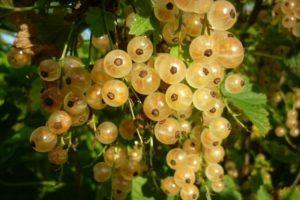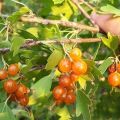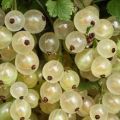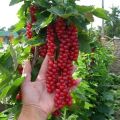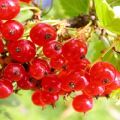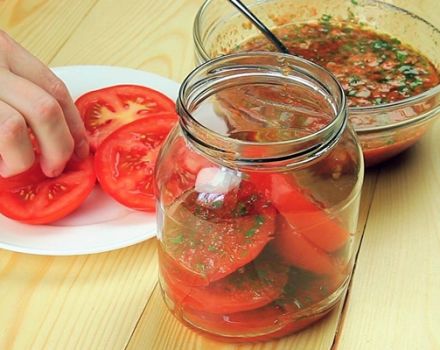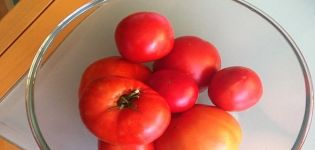Description and characteristics of the Venus currant variety, cultivation and care
Venus currant is a frost-resistant and drought-resistant berry variety, unpretentious in care, perfectly takes root in any soil. Undemanding to watering and feeding. Possesses high productivity, gives large, juicy sweet black fruits.
Breeding history and region of growth
The Venera variety was included in the State Register of the Ural Region in 2004. It was bred by the breeder V.S.Ilyin. Work on black currants was carried out at the Research Institute of the South Ural Territory of Fruit and Potato Growing. Venus was bred after crossing Bradport and Dove Seedling.
The advantages and disadvantages of Venus
The Venus variety has its positive and negative sides. Positive features include:
- transportability of fruits;
- pleasant taste of berries;
- winter hardiness;
- drought resistance;
- strong immunity;
- unpretentious care;
- high productivity;
- early maturity;
- large berry sizes.
Among the disadvantages are:
- lack of resistance to septoria;
- the possibility of damage by a kidney mite.
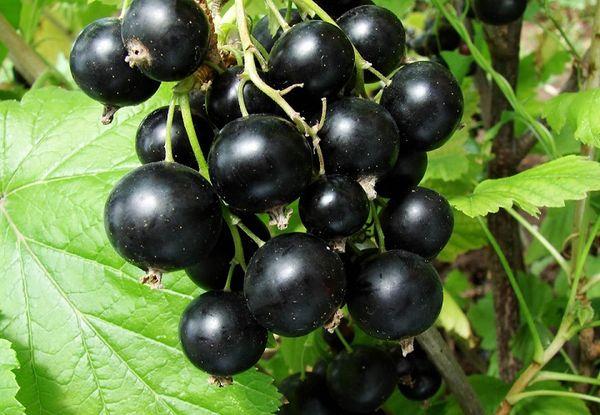
Description and characteristics of Venus
Mid-season variety, plant of medium height, sprawling branches, medium density. The branches are medium in thickness, light green in color with a white bloom, curved, grow upward, do not bend. The leaves are five-pinnate, medium-sized, green, with a waxy glossy coating. The toothed leaves are pointed, wavy, attached by dense cuttings.
Flowering occurs in early spring. On the branches, small pale pink flowers are formed, matte. One flower consists of 5-6 petals, the inflorescence includes 7-11 flowers, which are attached by a peduncle 4-7 cm long. After the end of flowering, the fruit ovary occurs.
The berries are large, the size of one reaches 6 grams. The pulp is sweet, juicy, the skin is thin, sweet, black. The shape of the fruit is round.
Frost resistant variety
Venus currant is suitable for growing in regions with frequent frosts. It tolerates low temperatures well. It tolerates temperatures below -35 ° C. However, it is recommended to insulate young seedlings for the winter.

Important! The plant tolerates drought and low humidity well.
Disease and frost resistance
The variety is resistant to powdery mildew and anthracnose. Susceptible to the attack of kidney mites and septoria. Winter-hardy currants take root well in cold regions of the country. It tolerates low temperatures below -35 ° С. To prevent the development of diseases, it is necessary to spray before the onset of bud ovary, in early spring.
All about flowering and fruiting
Currant flowering begins in early spring. 7-11 buds are tied on one ovary. It blooms with pale pink flowers, matte, with slight pubescence. Flowering lasts about 2 weeks. Then ovaries form, and large black berries grow. Fruit sizes vary from 2.5 to 6 grams. They are round, black in color, sweet in taste, with a slight sourness. The skin is thin, loose. The fruits are tightly attached to the shoots, do not fall off.
Application and useful properties of berries
The berries are used for fresh consumption, as well as for processing. They are used to make jam, compotes, jams, homemade wine. Used for homemade cakes. The variety is grown for sale in the markets, since the fruits are stored for a long time and can be easily transported.

The berries have excellent taste. The fruits are rich in vitamin C, 100 grams of berries contain 95 mg of vitamin. Currant has an individual sweet, dessert taste.
How to plant currants on the site
In order to plant Venus currants on your own site, you must take into account the timing of the planting, choose the right place, and prepare the seedling.
Terms of planting works
The seedlings are transferred to the soil in spring or autumn. They begin to prepare the soil in August. In the selected area, they dig up the earth, remove weeds and stones. Then manure, superphosphate and potassium sulfate are introduced. Leave for several days to interact, then dig holes for planting.
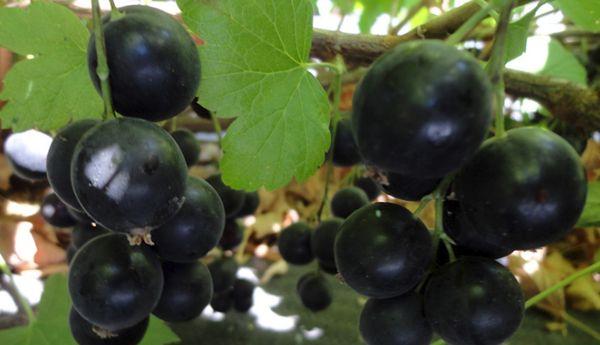
Important! With an autumn planting, the survival rate of the bush is higher.
Site selection and seedling preparation
Venus is not very whimsical when choosing a place. However, waterlogged soils and soils with stagnant water will not suit her. Since the plant is drought tolerant, the bush prefers dry, airy soils. Currants can be planted in semi-shaded areas. Suitable for growing next to other trees and shrubs. Daylight hours for a shrub should last 5-6 hours a day for good growth and development.
Technological process of planting a plant
Shrubs are planted at a distance of 1.5 meters from each other. After preliminary preparation of the place for the shrub, planting is carried out according to the following algorithm:
- Dig a hole 50 cm deep and 60 cm in diameter.
- The excavated soil is mixed with peat (2 buckets), humus (1 bucket), superphosphate (15 grams), potassium sulfate (30 grams).
- Part of the mixture is placed in a pit and filled with 2 buckets of warm water.
- Leave for 2-3 days.
- The roots of the seedling are carefully straightened, each shoot is cut off by 5-6 cm, the damaged ones are removed.
- Placed in a pit.
- Sprinkle with soil layer by layer. Each layer is moistened and tamped with hands to prevent the formation of cavities with air near the roots.
- From above they mulch with a layer of peat, straw, compost around the bush.
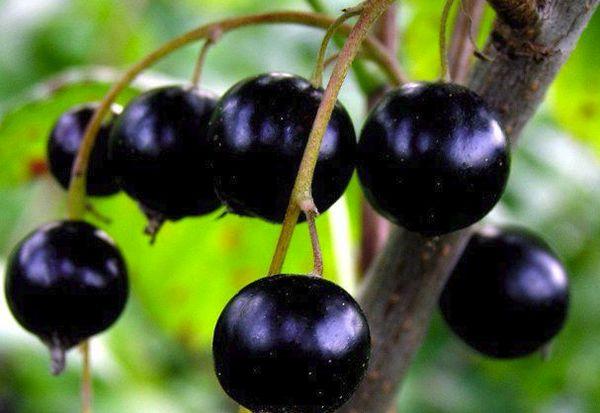
The nuances of caring for the variety
For successful cultivation and obtaining a rich harvest, it is necessary to carry out regular watering, fertilizing, loosening and mulching, form a crown when pruning. Preventive treatments are carried out against diseases and pests. Young seedlings are covered for the winter.
Regularity of watering
Currants are drought-resistant, but they like abundant watering. It is carried out 3-4 times per season. At a time, pour 2 buckets of water at once. In dry weather, irrigation is increased up to 5-6 times per season. On average, 1 watering is carried out every 2-3 weeks.
What and how to feed the bushes
The first feeding is carried out in the spring during the flowering period, organic fertilizers are applied. The second - after harvesting, phosphate and sulfate mineral fertilizers are added along with organic matter. Chemicals are sold in stores. They are used according to the instructions on the package.
Loosening and mulching of beds
Loosening of the soil around the root area is carried out after each rain and watering. This provides additional aeration and oxygenation of the roots.
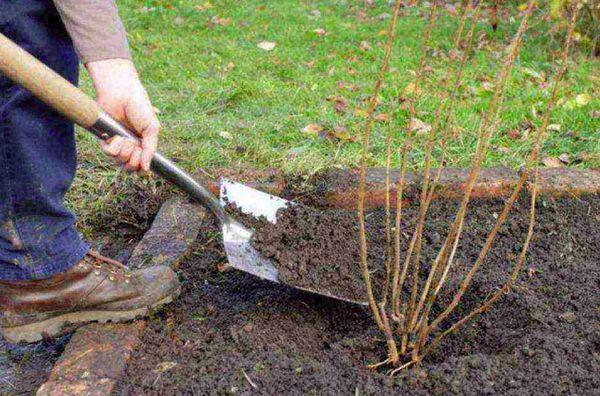
Mulching helps to retain moisture at the roots of currants, prevents the development of rot and infection of currants. Mulching is carried out with peat, straw, compost, pebbles. The selected material is evenly distributed around the shrub. The material is tamped tightly with your hands so that there is no blurring during rain and watering.
Formative pruning
After landing in the ground, the central shoot is removed. At the end of the season, thinning is carried out, damaged and dry branches are removed. If the branches have grown thickly, then cut off every third. To prevent infection, the cut sites are covered with garden pitch.
Every 2-4 years, all shoots are cut off, leaving 2 main ones for the formation of young branches. The younger the shoot, the larger the fruit it gives.
Preventive treatments
Processing is carried out in the spring, in warm, dry weather, when the temperature outside is at least 18 ° C. From harmful insects that feed on currant leaves, the preparation Fitoverm, tobacco-ash water, treatment with soapy water helps. To prevent the appearance of butterfly caterpillars on the leaves, elderberry branches are dug in next to the shrub. Elderberry scares away butterflies with its smell.
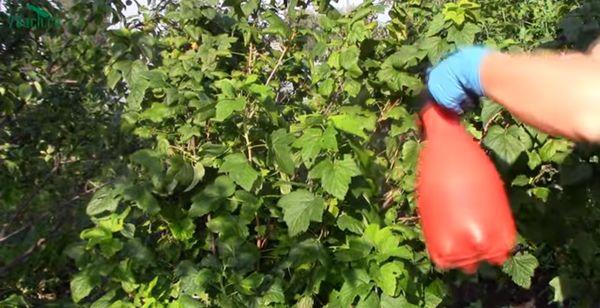
Shelter for the winter
Winter hardiness of currants appears in the 3-4th year of the growing season. It is recommended to cover young seedlings with a completely special cloth. Adult shrubs for the winter are insulated with moss or straw, mulch.
Important! The fabric for insulation should not be synthetic.
How to propagate currant bushes
Reproduction of currants is carried out by three methods: cuttings, layering, dividing the shrub.
By cuttings
For propagation by cuttings, lignified annual shoots are used. The preparation of the material is carried out in early spring or autumn. It is important that the shoots are harvested from healthy bushes. The cuttings must be at least 6 mm in diameter and about 15 cm long.
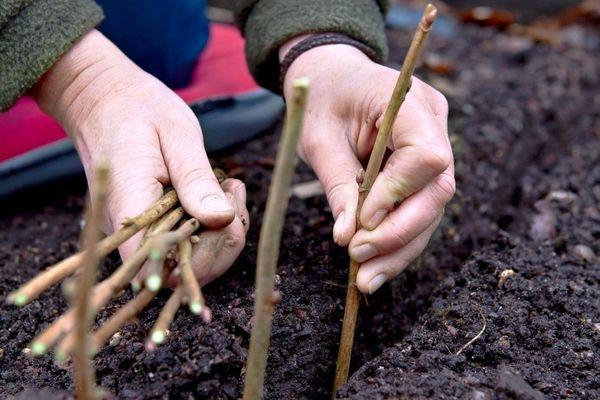
Before planting, the beds are prepared, they are well moistened and fertilizers are added. When planted in spring, buds begin to set by early summer. On the 7-10th day, the cuttings are covered with a film to accelerate rooting. When planted in the fall, the buds awaken and the leaves are formed by the spring. When planting for the winter, fresh bushes are covered until spring.
Layers
Shoots are cut from the mother bush at the age of 1-3 years. A branch attached to a bush is buried nearby. Together with him, they dig in a wooden stake along with a layering. Reproduction by this method is carried out in spring and autumn. After rooting, the daughter bush is transplanted from the mother.
By dividing the bush
After harvesting, a hole is dug next to the currant bush until the roots appear. Part of the roots with 4-5 tree shoots are separated from the mother shrub and transplanted to another place, observing all the rules.
Reviews of experienced gardeners about the variety
Igor, 35 years old, Chekhov: “I bought a currant of the Venus variety on the horticultural market 3 years ago. I would like to note the unpretentiousness of the shrub. It got accustomed very well and in the first year made me happy with its berries. Planting was carried out in the spring. At the end of the season, propagated by cuttings, almost all cuttings have taken root. The berries are very large and sweet, the flesh is soft, sweet, and the skin too. The fruits are well kept. Every year we prepare jam and compotes from them ”.
Tatyana, 43 years old, Ufa: “The neighbors on the site shared with me the Venus currant shoot.Reproduction was carried out by dividing the bush. Planted currants in the fall. The first shoots appeared in the spring. Harvested in the summer. Before the formation of the buds, she carried out all the necessary treatments, no diseases and harmful insects were noticed. Delicious black fruits. Most of all, they were struck by their size. Children are very fond of currants with sugar, I heard that the variety of this currant is rich in vitamin C. "
Angelina, 54 years old, Moscow: “I have long wanted to plant currants on my site. For a long time I could not decide on the variety. I chose the variety Venus. I bought 3 seedlings in the market. They all took root well. I chose the landing site next to the fence. The soil on the plot is rather dry, but this did not affect the quality and quantity of fruits. All the berries are large, well stored, since it was not immediately possible to process them. They grow in clusters on the branches, do not crumble. The whole family rejoices at such a berry. "

